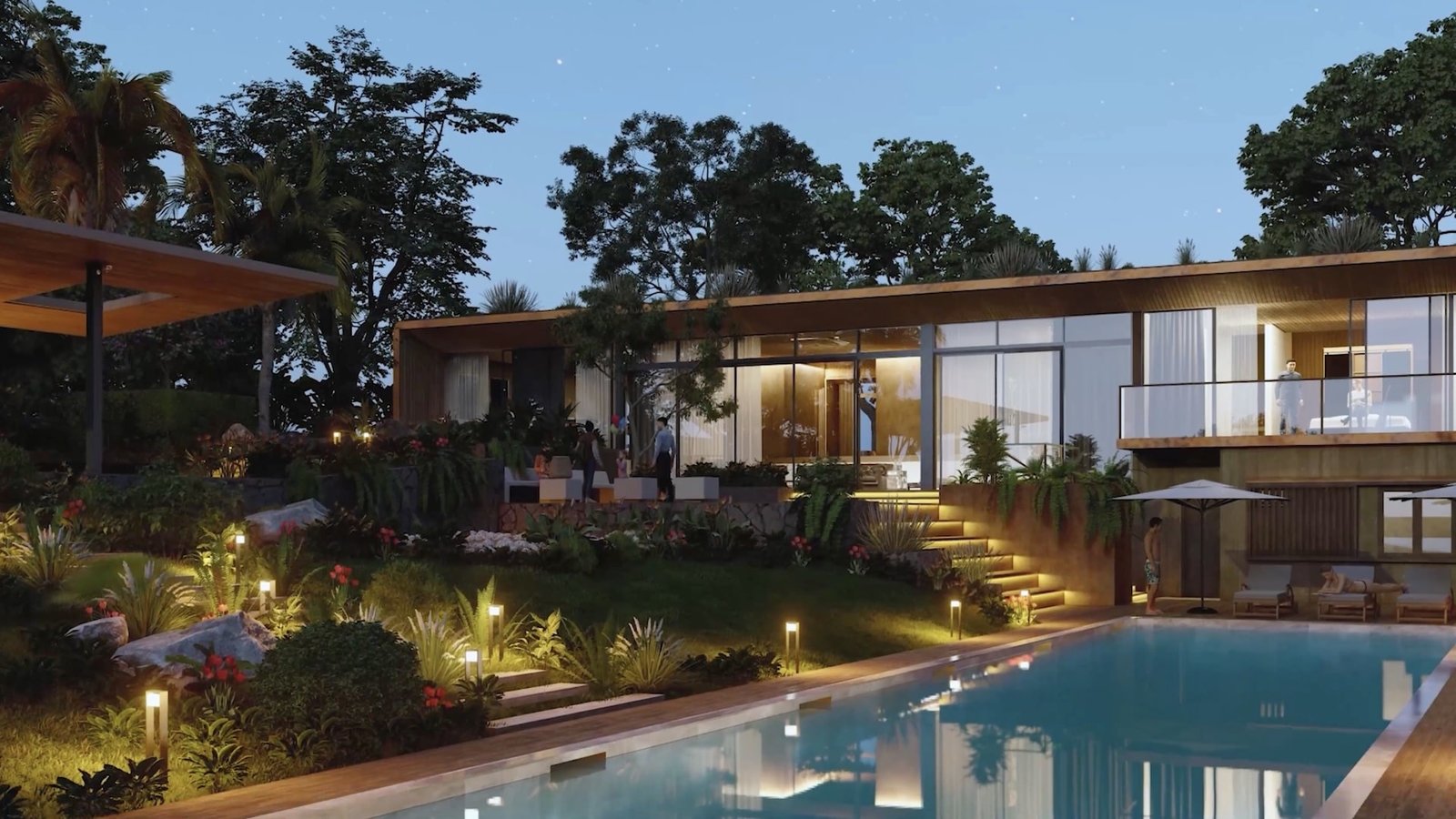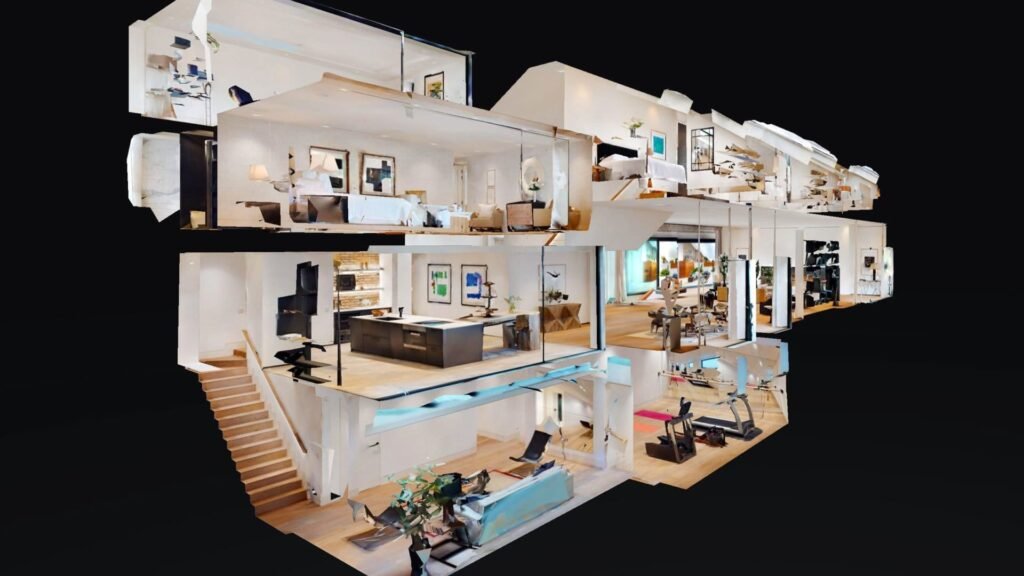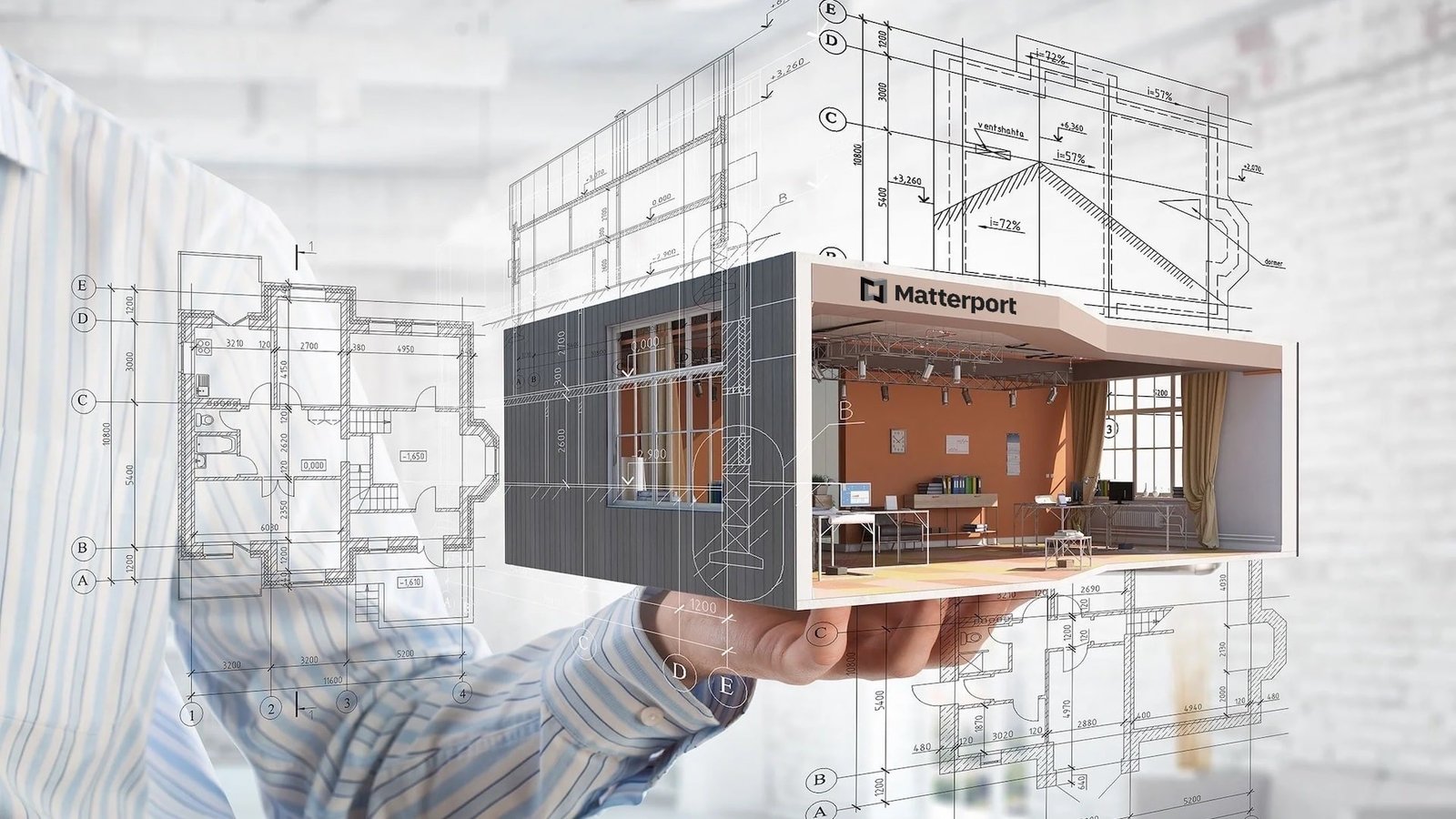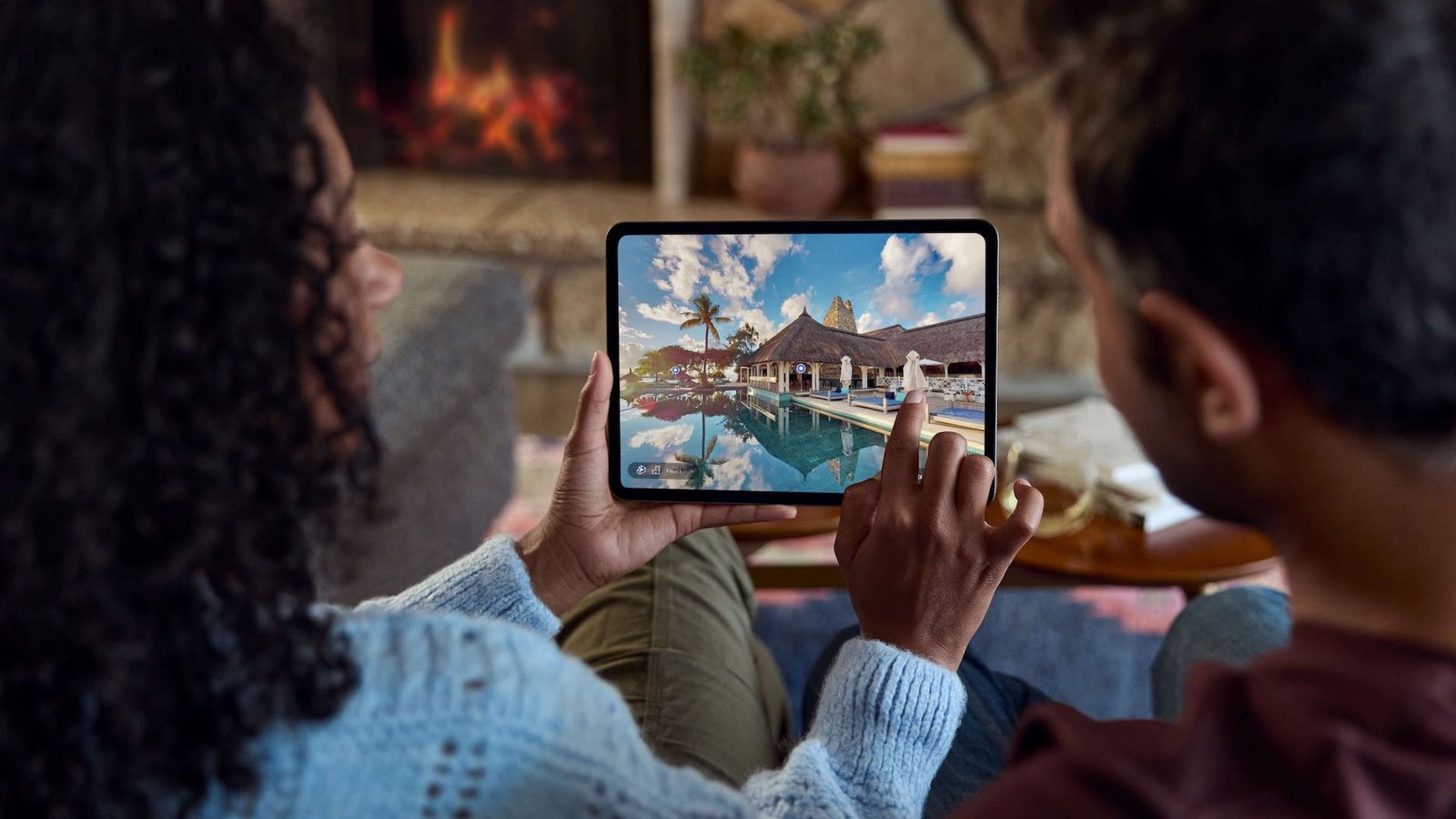
Matterport helps you reach a wider audience, sell properties 31% faster, and for up to 9% higher prices. Each 3D Matterport virtual tour automatically generates a dedicated web link to showcase your property as you prefer on real estate portals and social networks. Your listings are accessible 24/7 to prospects from around the world. 71% of buyers state they are willing to purchase a property with a 3D Matterport virtual tour without seeing it in person.
Unlike photos or videos, the 3D dollhouse view allows for a comprehensive understanding of the property’s structure. Clients also gain a better idea of space layout. With the measurement tool, they can digitally measure everything, thus reassuring their purchasing decision. Mattertags provide additional information by integrating links, images, text, and videos. Guided tours within the Matterport virtual tour can showcase the property’s highlights to your clients. Buyers can share the Matterport virtual tour with their financial institutions to appraise the property remotely and expedite the process.
If you desire to engage the user, offer them the freedom of discovery without hiding anything, help them envision themselves in your environment, and encourage them to take action (such as buying your property), then the 3D Matterport virtual tour is the best choice.
CGI Matter
Google & Facebook
Immersive 3D Matterport virtual tours now hold a prominent position on the Internet. Major web players like Google and Facebook are engaged in a fierce competition regarding 360° content. Statistics strongly favor content with 3D Matterport virtual tours:
- Average time spent on a website containing a 3D Matterport virtual tour is multiplied by up to 6 times
- Search engine ranking is significantly improved
- Newsletters perform better with up to + 60% click-through rates
- Increased virality on social media
These data are also reflected on real estate portals. Indeed, a property listing with a 3D Matterport virtual tour attracts between 3 to 5 times more clicks.
Virtual Tour vs. Video, Which to Choose?
If you wish to express yourself, tell a story, guide viewers where you want them, and conceal certain elements, video is more suitable.
However, if you want to make the user an active participant, provide them with the choice of discovery without hiding anything, help them immerse themselves in your environment, and prompt them to take action (such as purchasing your property), then the 3D Matterport virtual tour is a much better choice.
If you aim to stand out from the competition, a virtual tour is also a more unique and less common experience compared to video.
Also, remember that it is entirely possible to integrate videos into a virtual tour (though the reverse is not possible).
Video
- Viewed linearly, viewers have no control over what they see.
- Subjective viewpoint of the creator.
- Only shows a selected portion of the environment.
- Editing provides pacing.
- Video experience is similar for all (though feelings might differ).
- Viewers remain passive and receive images and sound, with limited control (pause and stop, for instance).
- Video has a fixed duration.
Matterport 3D Virtual Tour
- While the starting point is the same for everyone, each person constructs their own experience.
- The visitor can choose a different path each time.
- Shows the entire 360° environment (no off-camera areas).
- No imposed pacing; the visitor can take their time and navigate at their own speed.
- Each person will have their own experience; the common factor is the environment (similar to reality).
- The visitor is active, and their actions determine their experience and perception of the environment.
- The visitor explores the location as in reality, without the distant perspective of another person’s gaze.
Video is ideal for showcasing:
Strengths:
- Very accessible, requires no effort.
- Storytelling.
- Quick overview.
Weaknesses:
- Doesn’t encourage action.
- Limited subjective visual perspective.
- Difficult to envision oneself in the location.
Matterport Virtual Tour is ideal for exploring:
Strengths:
- Puts the visitor at the heart of the location and encourages action.
- Objective and comprehensive viewpoint of the location.
- 3D model or dollhouse view shows room proportions.
- Ability to take measurements.
- Video call within the virtual tour.
- Information bubbles (website, plans, video, aerial view, brochure, etc.).
- Discovery pleasure.
Weaknesses:
- Requires learning (though intuitive).
- No control over the visitor’s experience.
- Difficult to know if the visitor has seen everything in the tour.

Competitive Landscape
The world of virtual tours underwent a major evolution with the introduction of 3D and Matterport technology. Before this significant change, virtual tours consisted of simple 360° photos, static and linked together by arrows. With 3D technology, virtual tours took a turn by providing a smoother and more immersive user experience. We’ll explain the major enhancements brought by 3D Matterport virtual tours compared to traditional 360° virtual tours.
The 3D Model
For understanding the layout of different spaces, the 3D model is a true advantage. This 3D representation of a space also provides an aerial view of the area.
Transitions Between Viewpoints
In traditional 360° virtual tours, transitions between viewpoints are less realistic. These tours typically have few viewpoints (generally one per room), limiting movement—visitors can’t go everywhere in the room. When progressing from one 360° viewpoint to another by clicking an arrow, it’s essentially going from one photo to another, with an apparent lack of transition and relatively long image loading times. This results in an unimmersive movement.
With 3D Matterport virtual tours, there’s a genuine sense of movement when transitioning between 360° viewpoints. These smooth transitions are facilitated by the 3D model. When viewing a 360° viewpoint, it’s a traditional panorama. Moving to another viewpoint within the room means entering and exiting the 3D model to reach the new viewpoint. This transition in the 3D model is so quick that it’s hardly noticeable. The result is a smooth movement, as if genuinely moving forward. Numerous viewpoints are present in 3D virtual tours, allowing visitors to explore every corner of a space, with stunning image quality.
Video Mode in a 3D Matterport Virtual Tour
Thanks to the 3D model of Matterport virtual tours and their fluid transitions between viewpoints, a video can be created directly within the virtual tour. This guided video tour with a Slideshow or Walkthrough mode is created by defining custom points of interest, yielding a qualitative and immersive result.
Integration with Google Maps
The Matterport and Google partnership enables the publication of 3D Matterport virtual tours on Google Maps, Google Street View, Google Earth, and consequently, on Google Search. When clients search for your business or a specific location on Google, they also see the 360° photos and virtual tours. Your clients can explore places before visiting. The Google Maps virtual tour is designed as a series of connected 360º images. Currently, there’s no 3D geometry or dollhouse view available within a Google Maps tour.
More Than a 360° View
While panoramic 360° tours might seem 3D at first glance, they are not. Only 3D Matterport virtual tours allow buyers to move through a location as if they were truly there. Moreover, only Matterport provides a comprehensive perspective through its exclusive dollhouse view.
3D Matterport virtual tours offer:
- Fast delivery
- Publication on international real estate portals
- Easy sharing with a URL
- Simple integration into a website
- Sharing through QR codes
- Highlighting features
- Virtual reality with Meta VR headset
- Integration into Google Maps Street View
- 3D walkthrough or slideshow guided tours
- Video conferencing
- Branding integration
CGI Matter




